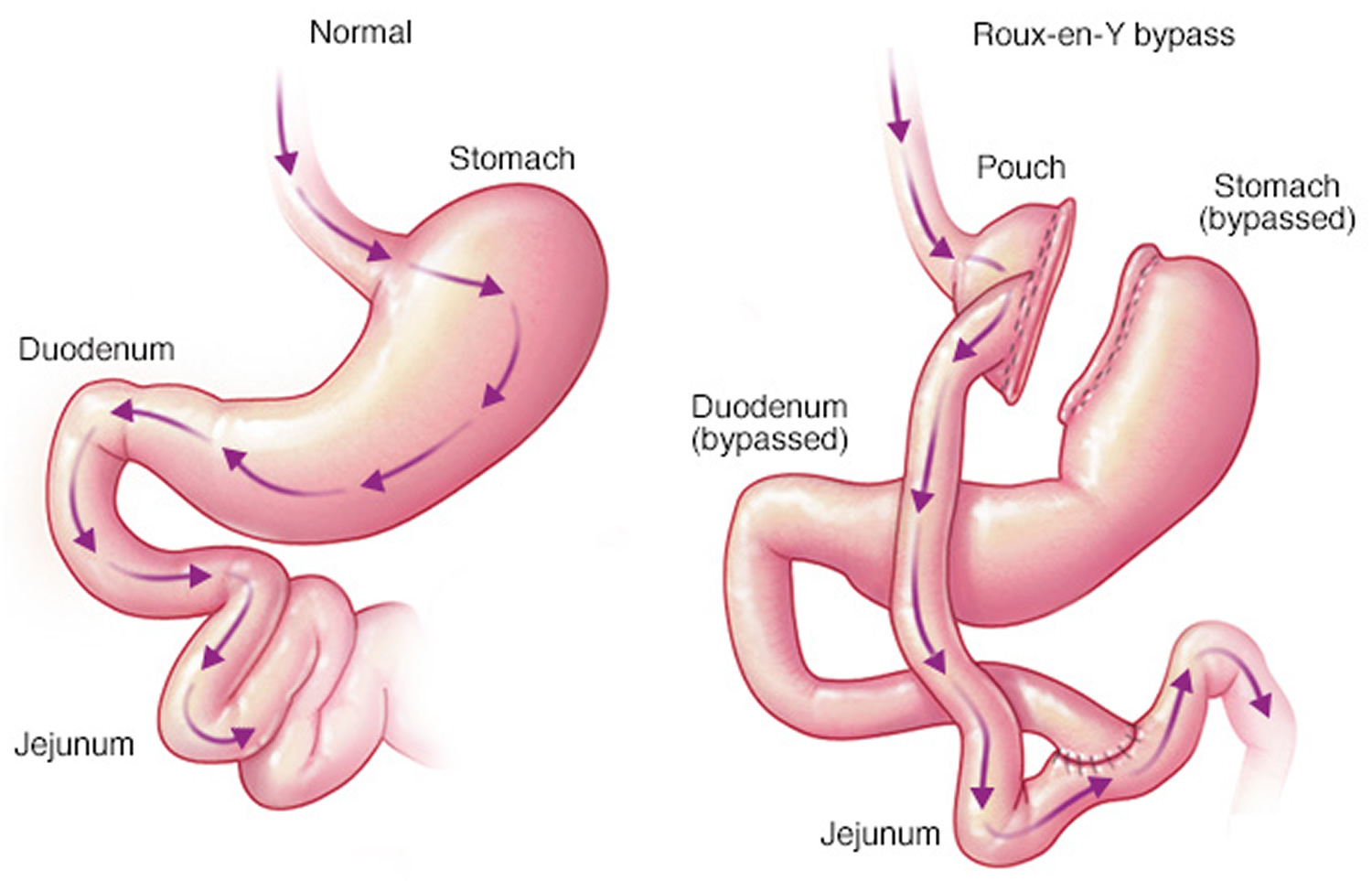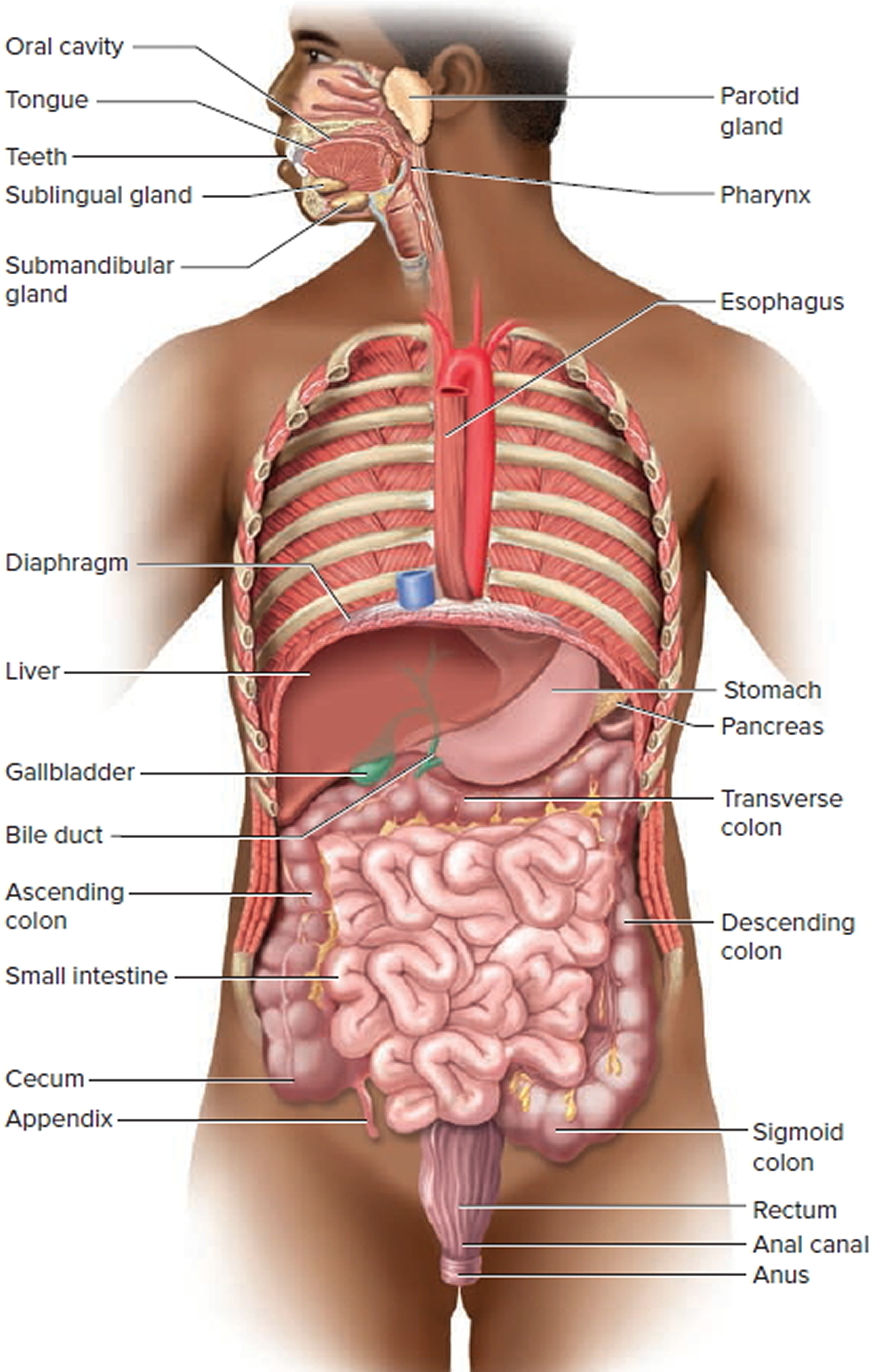Contents
What is dumping syndrome
Dumping syndrome occurs when food, especially sugar, moves too fast from the stomach to the duodenum—the first part of the small intestine—in the upper gastrointestinal (GI) tract. This condition is also called rapid gastric emptying.
Dumping syndrome has two forms, based on when symptoms occur:
- Early dumping syndrome—occurs 10 to 30 minutes after a meal
- Late dumping syndrome—occurs 2 to 3 hours after a meal
Most people with dumping syndrome develop signs and symptoms, such as abdominal cramps and diarrhea, 10 to 30 minutes after eating. Other people have symptoms one to three hours after eating, and still others have both early and late symptoms.
People who have had surgery to remove or bypass a significant part of the stomach are more likely to develop dumping syndrome (see Figure 2). Some types of gastric surgery, such as bariatric surgery, reduce the size of the stomach. As a result, dietary nutrients pass quickly into the small intestine. Other conditions that impair how the stomach stores and empties itself of food, such as nerve damage caused by esophageal surgery, can also cause dumping syndrome.
Generally, you can help prevent dumping syndrome by changing your diet after surgery. Changes might include eating smaller meals and limiting high-sugar foods. In more-serious cases of dumping syndrome, you may need medications or surgery.
See your doctor if any of the following apply to you:
- You develop signs and symptoms that might be due to dumping syndrome, even if you haven’t had surgery.
- Your symptoms are not controlled by dietary changes.
- You are losing large amounts of weight due to dumping syndrome. Your doctor may refer you to a registered dietitian to help you create an eating plan.
The Gastrointestinal (GI) tract
The gastrointestinal (GI) tract is a series of hollow organs joined in a long, twisting tube from the mouth to the anus—the opening where stool leaves the body (Figure 1). The body digests food using the movement of muscles in the GI tract, along with the release of hormones and enzymes. The upper GI tract includes the mouth, esophagus, stomach, duodenum, and small intestine. The esophagus carries food and liquids from the mouth to the stomach. The stomach slowly pumps the food and liquids into the intestine, which then absorbs needed nutrients. Two digestive organs, the liver and the pancreas, produce digestive juices that reach the small intestine through small tubes called ducts.
The last part of the GI tract—called the lower GI tract—consists of the large intestine and anus. The large intestine is about 5 feet long in adults and absorbs water and any remaining nutrients from partially digested food passed from the small intestine. The large intestine then changes waste from liquid to a solid matter called stool. Stool passes from the colon to the rectum. The rectum is located between the last part of the colon—called the sigmoid colon—and the anus. The rectum stores stool prior to a bowel movement. During a bowel movement, stool moves from the rectum to the anus.
Figure 1. Gastrointestinal tract
Figure 2. Gastric bypass surgery
 Note: Before gastric bypass, food (see arrows) enters your stomach and passes into the small intestine. After surgery, the amount of food you can eat is reduced due to the smaller stomach pouch. Food is also redirected so that it bypasses most of your stomach and the first section of your small intestine (duodenum). Food flows directly into the middle section of your small intestine (jejunum), altering the secretion of gastrointestinal hormones and thereby affecting your appetite and metabolism.
Note: Before gastric bypass, food (see arrows) enters your stomach and passes into the small intestine. After surgery, the amount of food you can eat is reduced due to the smaller stomach pouch. Food is also redirected so that it bypasses most of your stomach and the first section of your small intestine (duodenum). Food flows directly into the middle section of your small intestine (jejunum), altering the secretion of gastrointestinal hormones and thereby affecting your appetite and metabolism.
Dumping syndrome causes
In dumping syndrome, food and gastric juices from your stomach move to your small intestine in an uncontrolled, abnormally fast manner. This is most often related to changes in your stomach associated with surgery.
Dumping syndrome can occur after any stomach operation or removal of the esophagus (esophagectomy). Gastric bypass surgery for weight loss is the most common cause today.
Dumping syndrome is caused by problems with the storage of food particles in the stomach and emptying of particles into the duodenum.
- Early dumping syndrome results from rapid movement of fluid into the intestine following a sudden addition of a large amount of food from the stomach.
- Late dumping syndrome results from rapid movement of sugar into the intestine, which raises the body’s blood glucose level and causes the pancreas to increase its release of the hormone insulin.
- The increased release of insulin causes a rapid drop in blood glucose levels, a condition known as hypoglycemia, or low blood sugar.
Risk factors for dumping syndrome
Surgery that alters your stomach can increase your risk of dumping syndrome. These surgeries are most commonly performed to treat obesity, but are also part of treatment for stomach cancer and other conditions. These surgeries include:
- Gastrectomy, in which a portion or all of your stomach is removed.
- Gastric bypass surgery (Roux-en-Y operation), which is performed to treat morbid obesity. It surgically creates a stomach pouch smaller than the stomach, meaning you’re no longer able to eat as much as you once did. It connects the small intestine to this pouch in the form of a gastrojejunostomy.
- Esophagectomy, where all or part of the tube between the mouth and the stomach is removed.
Dumping syndrome symptoms
The symptoms of early and late dumping syndrome are different and vary from person to person.
Early dumping syndrome symptoms may include:
- nausea
- vomiting
- abdominal pain and cramping
- diarrhea
- feeling uncomfortably full or bloated after a meal
- sweating
- weakness
- dizziness
- flushing, or blushing of the face or skin
- rapid or irregular heartbeat
The symptoms of late dumping syndrome may include:
- hypoglycemia
- sweating
- weakness
- rapid or irregular heartbeat
- flushing
- dizziness
About 75 percent of people with dumping syndrome report symptoms of early dumping syndrome and about 25 percent report symptoms of late dumping syndrome. Some people have symptoms of both types of dumping syndrome 1.
Dumping syndrome diagnosis
Your doctor may use some of the following methods to determine if you have dumping syndrome.
- Medical history and evaluation. Your doctor can often diagnose dumping syndrome by taking a medical history, particularly if you’ve had stomach surgery, and evaluating your signs and symptoms.
- Blood sugar test. Because low blood sugar is sometimes associated with dumping syndrome, your doctor may order a test (oral glucose tolerance test) to measure your blood sugar level at the peak time of your symptoms to help confirm the diagnosis.
- Gastric emptying test. A radioactive material is added to food to measure how quickly food moves through your stomach.
Dumping syndrome treatment
Treatment for dumping syndrome includes changes in eating, diet, and nutrition; medication; and, in some cases, surgery. Many people with dumping syndrome have mild symptoms that improve over time with simple dietary changes.
Dumping syndrome diet
The first step to minimizing symptoms of dumping syndrome involves changes in eating, diet, and nutrition, and may include:
- Eating five or six small meals a day instead of three larger meals
- Delaying liquid intake until at least 30 minutes after a meal
- Chew well. Chewing food thoroughly before you swallow can aid digestion.
- Increasing intake of protein, fiber, and complex carbohydrates—found in starchy foods such as oatmeal and rice
- Avoiding simple sugars such as table sugar, which can be found in candy, syrup, sodas, and juice beverages
- Increasing the thickness of food by adding pectin or guar gum—plant extracts used as thickening agents
- Change your diet. Eat more protein — meat, poultry, creamy peanut butter and fish — and complex carbohydrates — oatmeal and other whole-grain foods high in fiber. Limit high-sugar foods, such as candy, table sugar, syrup, sodas and juices. The natural sugar in dairy products (lactose) might worsen your symptoms. Try small amounts at first, or eliminate them if you think they’re causing problems. You might want to see a registered dietitian for more advice about what to eat.
- Increase fiber intake. Psyllium, guar gum and pectin in food or supplements can delay the absorption of carbohydrates in the small intestine.
- Consume adequate vitamins, iron and calcium. These can sometimes become depleted following stomach surgery. Talk to your doctor or dietician about whether you need supplements.
- Sit upright after eating. Don’t lie down for 30 to 60 minutes after you eat. However, some people find that lying down for 30 minutes after meals also helps reduce symptoms.
Some people use supplements such as pectin, guar gum, black psyllium and blond psyllium to thicken the digestive contents and slow its progress through the intestines. If you decide to try a supplement, discuss it with your doctor to learn about any potential side effects or interactions with other medications you’re taking.
Dumping syndrome medication
A health care provider may prescribe octreotide acetate (Sandostatin) to treat dumping syndrome symptoms. The medication works by slowing gastric emptying and inhibiting the release of insulin and other GI hormones. Octreotide comes in short- and long-acting formulas. The short-acting formula is injected subcutaneously—under the skin—or intravenously—into a vein—two to four times a day. A health care provider may perform the injections or may train the patient or patient’s friend or relative to perform the injections. A health care provider injects the long-acting formula into the buttocks muscles once every 4 weeks. Complications of octreotide treatment include increased or decreased blood glucose levels, pain at the injection site, gallstones, and fatty, foul-smelling stools.
Dumping syndrome surgery
A person may need surgery if dumping syndrome is caused by previous gastric surgery or if the condition is not responsive to other treatments. For most people, the type of surgery depends on the type of gastric surgery performed previously. However, surgery to correct dumping syndrome often has unsuccessful results.
- Glasgow RE, Mulvihill SJ. Surgery for peptic ulcer disease and postgastrectomy syndromes. In: Yamada T, ed. Textbook of Gastroenterology. Vol. 1. West Sussex, UK: Wiley-Blackwell; 2009: 1060–1062.[↩]






